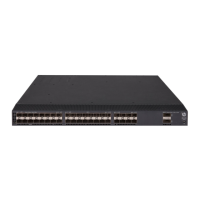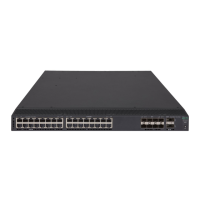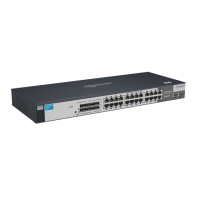136
Enabling portal roaming
Portal roaming takes effect only on portal users logging in from VLAN interfaces.
If portal roaming is enabled on a VLAN interface, an online portal user can access resources from any
Layer 2 port in the VLAN without re-authentication.
If portal roaming is disabled, to access external network resources from a Layer 2 port different from the
current access port in the VLAN, the user must do the following:
• First log out from the current port.
• Then re-authenticate on the new Layer 2 port.
To enable portal roaming:
Ste
Command
Remarks
1. Enter system view.
system-view N/A
2. Enable portal roaming.
portal roaming enable
By default, portal roaming is
disabled.
You cannot enable portal roaming
when login users exist on the
device.
Logging out portal users
Logging out a user terminates the authentication process for the user or removes the user from the
authenticated users list.
To log out users:
Ste
Command
1. Enter system view.
system-view
2. Log out IPv4 portal users.
portal delete-user { ipv4-address | all | interface interface-type
interface-number }
3. Log out IPv6 portal users.
portal delete-user { all | interface interface-type interface-number |
ipv6 ipv6-address }
Displaying and maintaining portal
Execute display commands in any view and the reset command in user view.
Task Command
Display portal rules on an interface.
display portal rule { all | dynamic | static } interface
interface-type interface-number [ slot slot-id ]

